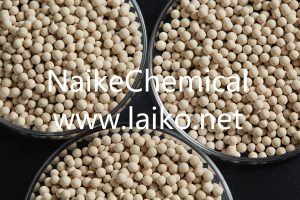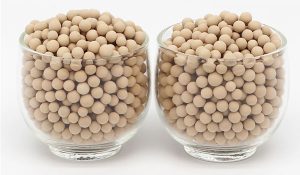What Are the Guidelines for Using 5A Molecular Sieve to Remove Water?
The pore size of 5A molecular sieve is 5A, which is generally called calcium molecular sieve. It can adsorb any molecule smaller than this pore size, and is mainly used in the separation of normal isomeric hydrocarbons, pressure swing adsorption separation, and co-adsorption of water and carbon dioxide. Based on the industrial application characteristics of 5A molecular sieve, the 5A molecular sieve desiccant produced by high-quality manufacturers has high selective adsorption, fast adsorption speed, especially suitable for pressure swing adsorption, and can adapt to various sizes of gas pressure swing adsorption devices such as oxygen production, hydrogen production, and carbon dioxide production. It is a boutique in the pressure swing adsorption industry. It can also adsorb C3-C4 normal alkanes, ethyl chloride, ethyl bromide, butanol, etc.
Ⅰ. Specific application of 5A molecular sieve
1. Normal alkanes can be separated from branched chain hydrocarbons and cyclic hydrocarbons by selective adsorption process. (Currently used industrially for large-scale n-isoparaffin separation process)
2. 5A molecular sieve can also be used for hydrogen production by pressure swing adsorption.
3. It can adsorb any molecule with a pore size smaller than 5A. In addition to the effects of 3A and 4A molecular sieves, it can also adsorb C3-C4 normal alkanes, ethyl chloride, ethyl bromide, butanol, etc., which can be applied to Normal isomeric hydrocarbon separation, pressure swing adsorption separation and co-adsorption of water and carbon dioxide. The amount of white water added by 5A molecular sieve depends on the moisture content of the product. The adsorption capacity of molecular sieve is relatively large, and the adsorption capacity is usually 22%.
Ⅱ. Guidelines for the use of 5A molecular sieve for water removal
1. Application: 5a molecular sieve has selective adsorption capacity, which can remove moisture in organic solvents and gases, but does not adsorb solvents and gases (such as tetrahydrofuran). The original dehydration method is to use caustic soda to remove, caustic soda is soluble in water, it is not easy to separate from tetrahydrofuran after dehydration, and it is not easy to recycle after using caustic soda, which actually increases the cost.
2. Operation: The dehydration operation of 5A molecular sieve is relatively simple. You can directly put the molecular sieve into the solvent removal, or directly let the solution and gas flow through the molecular sieve adsorption tower.
3. Adsorption capacity: The adsorption capacity of 5a molecular sieve is relatively large, and the general adsorption capacity is 22%.
4. Choice of adsorption: 5a molecular sieve is very easy to absorb water molecules. Since the diameter of water molecules is smaller than that of molecular sieves, the backwater molecules and molecular sieves can reach electrostatic equilibrium after adsorption (molecular sieves do not absorb particles with a diameter larger than their diameter).
5. Analysis without producing water: Molecular sieve 5a will not be released after absorbing water at room temperature.
6. Regeneration: The regeneration of 5A molecular sieve is relatively simple. Nitrogen above 300°C can be used again after one hour (non-combustible materials can be directly pumped into the air).
7. Long service life: 5a molecular sieve can be regenerated for 3-5 years.



